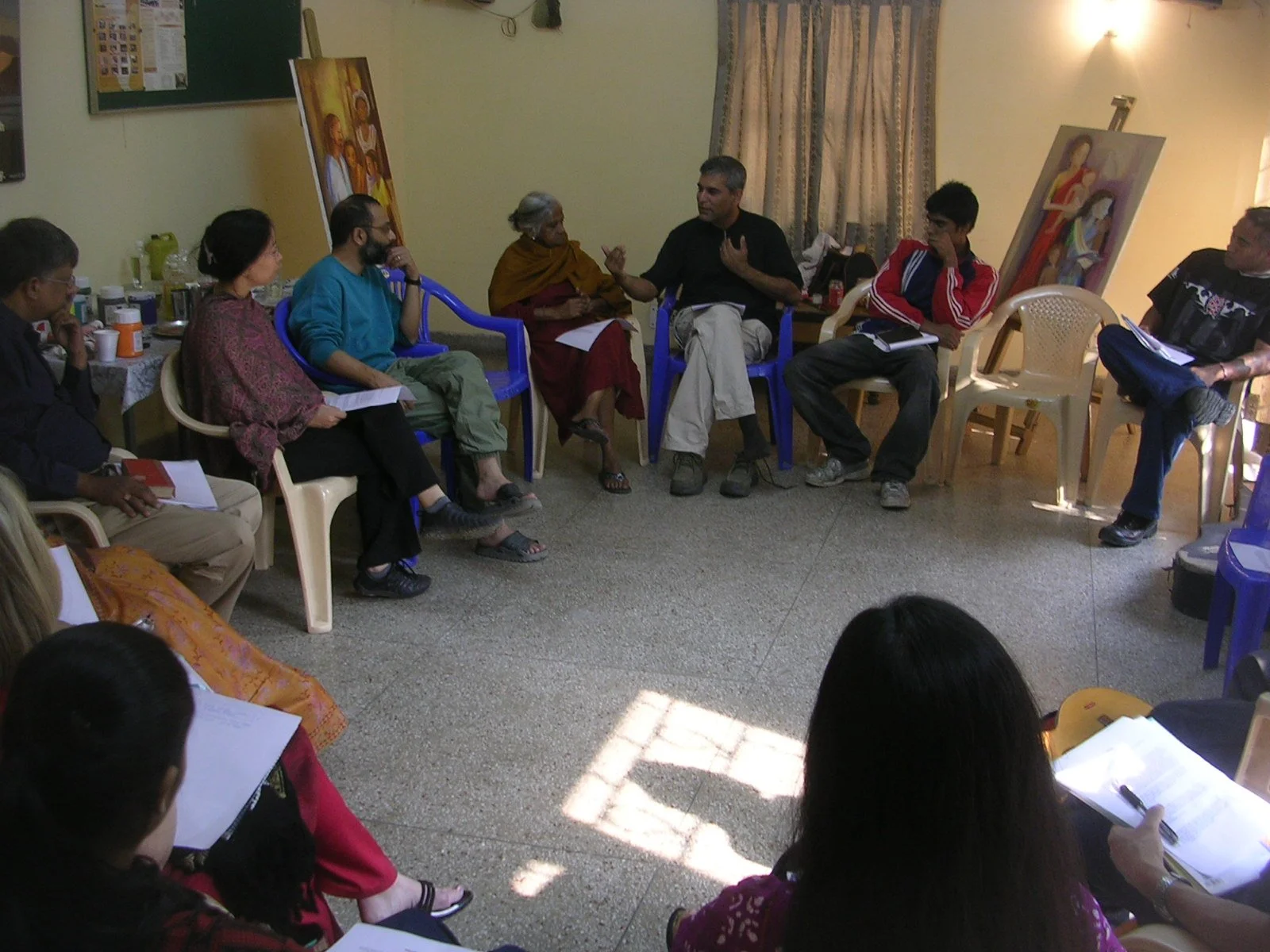
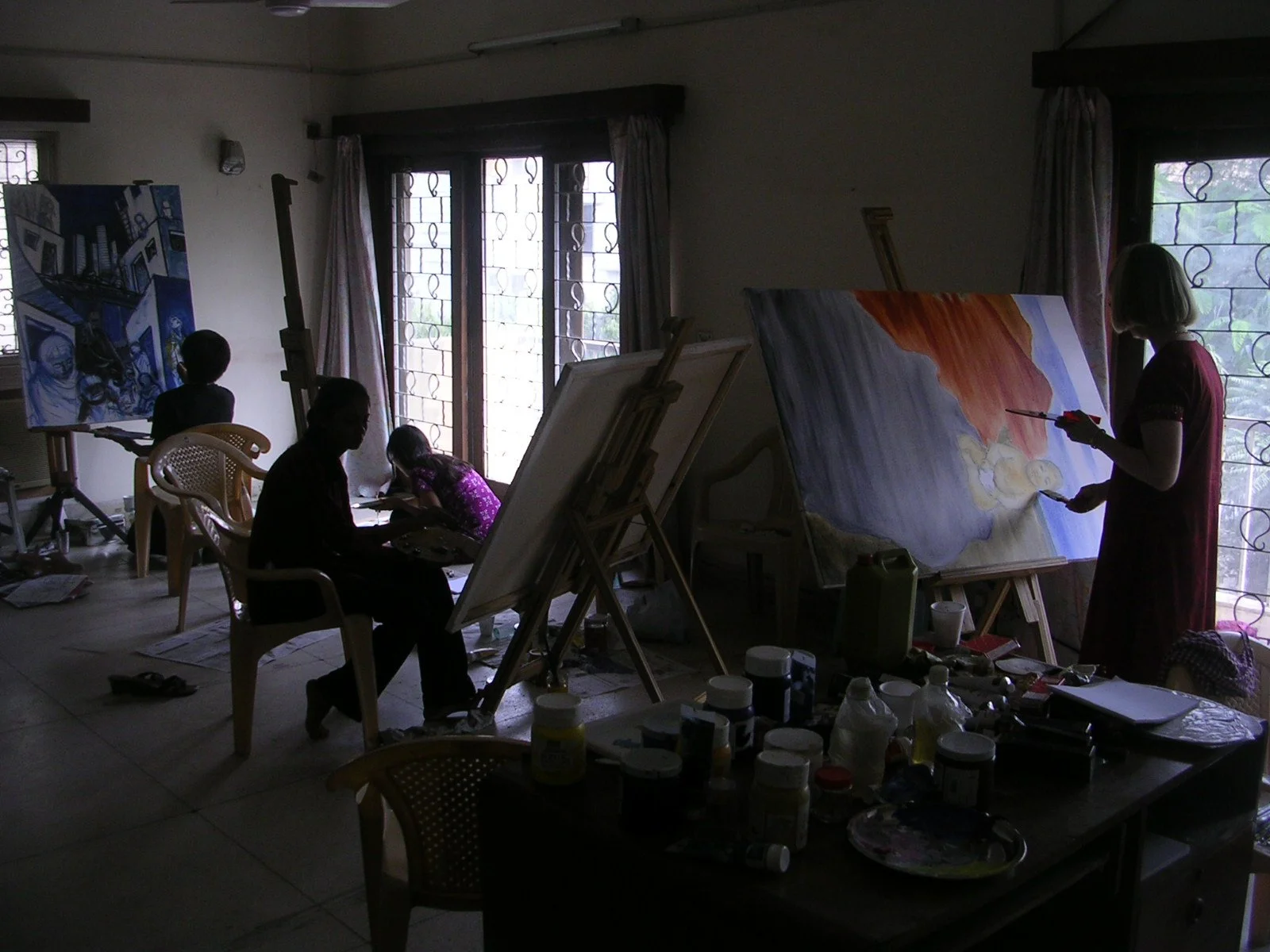
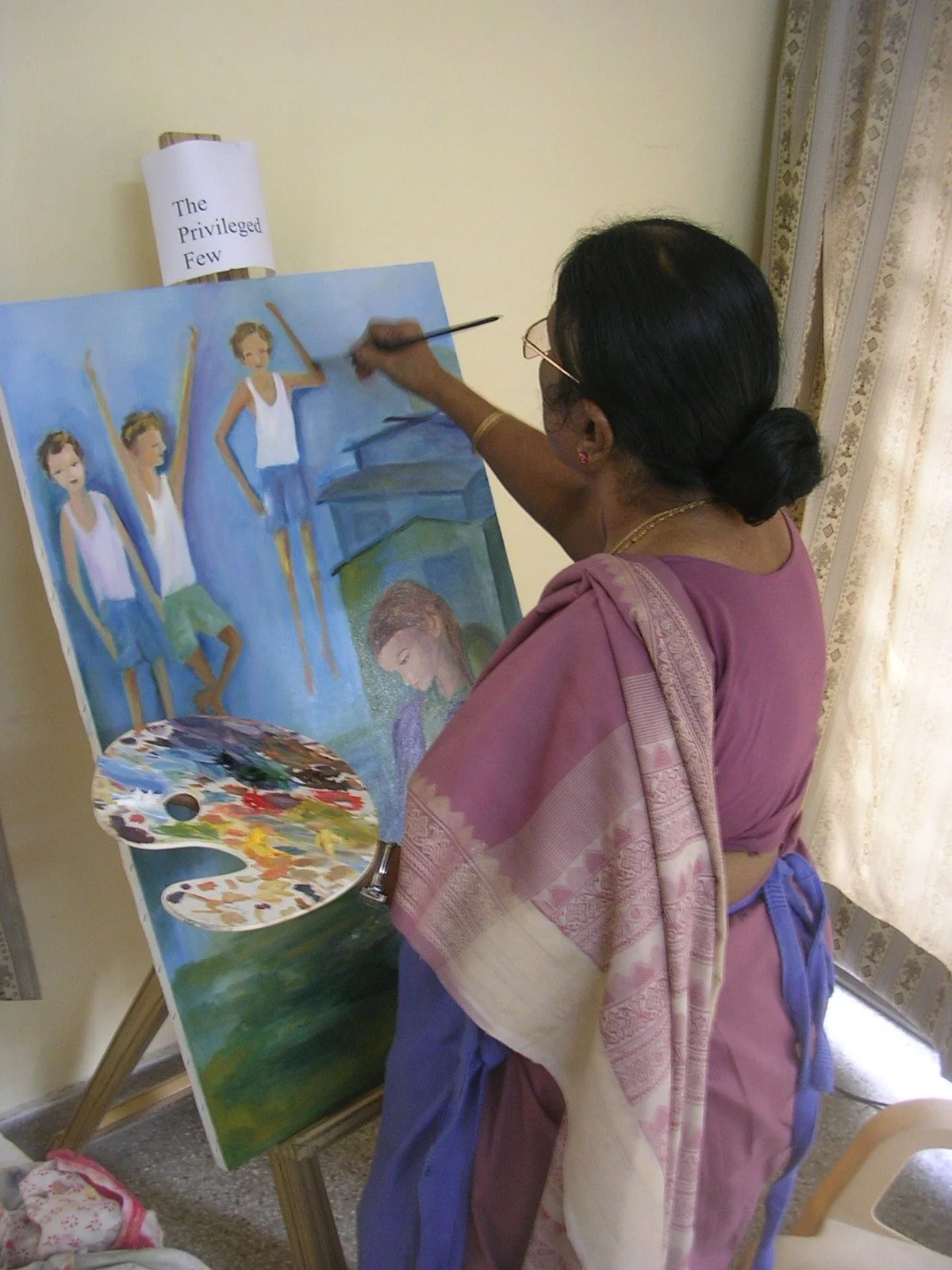

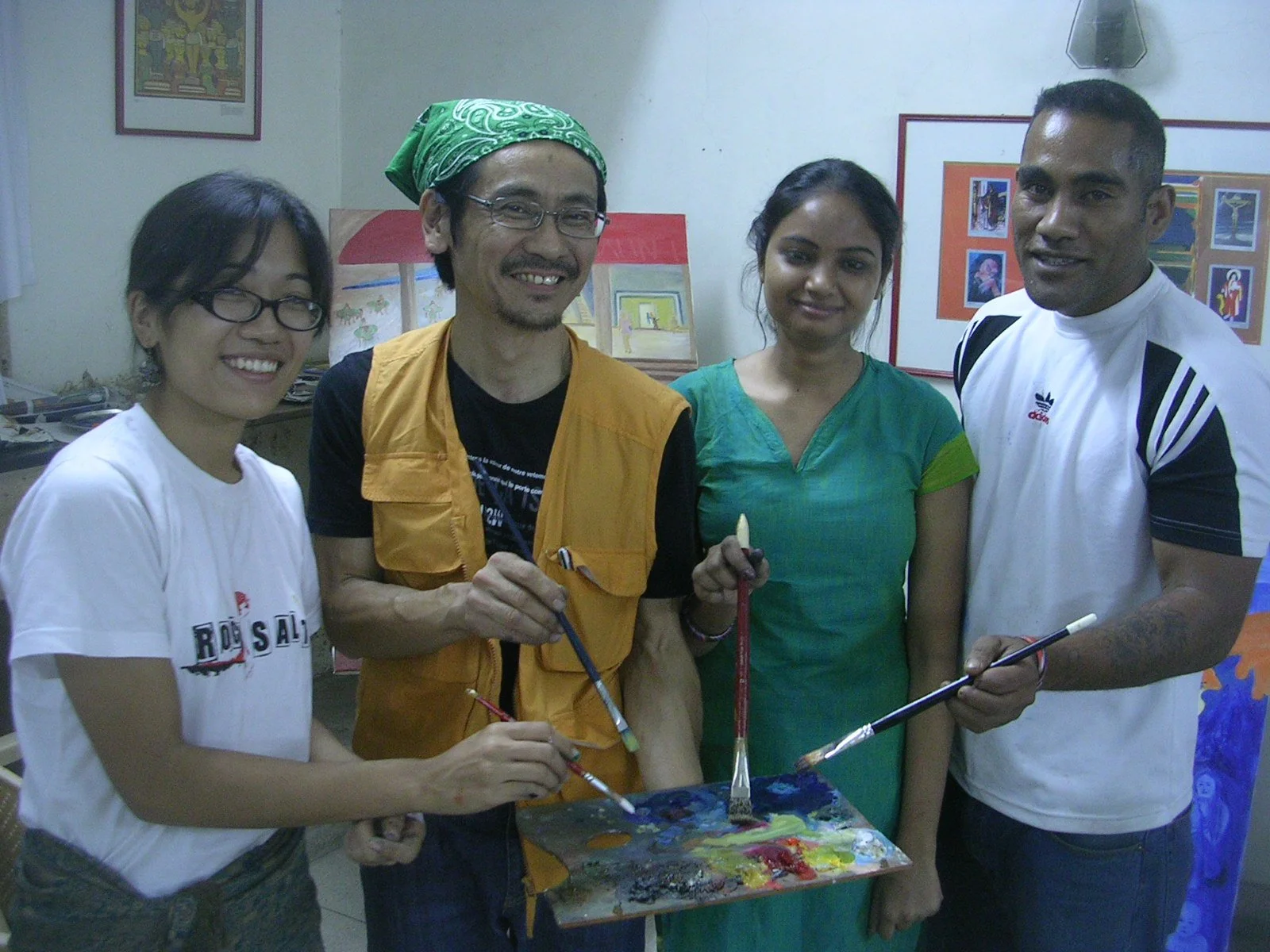
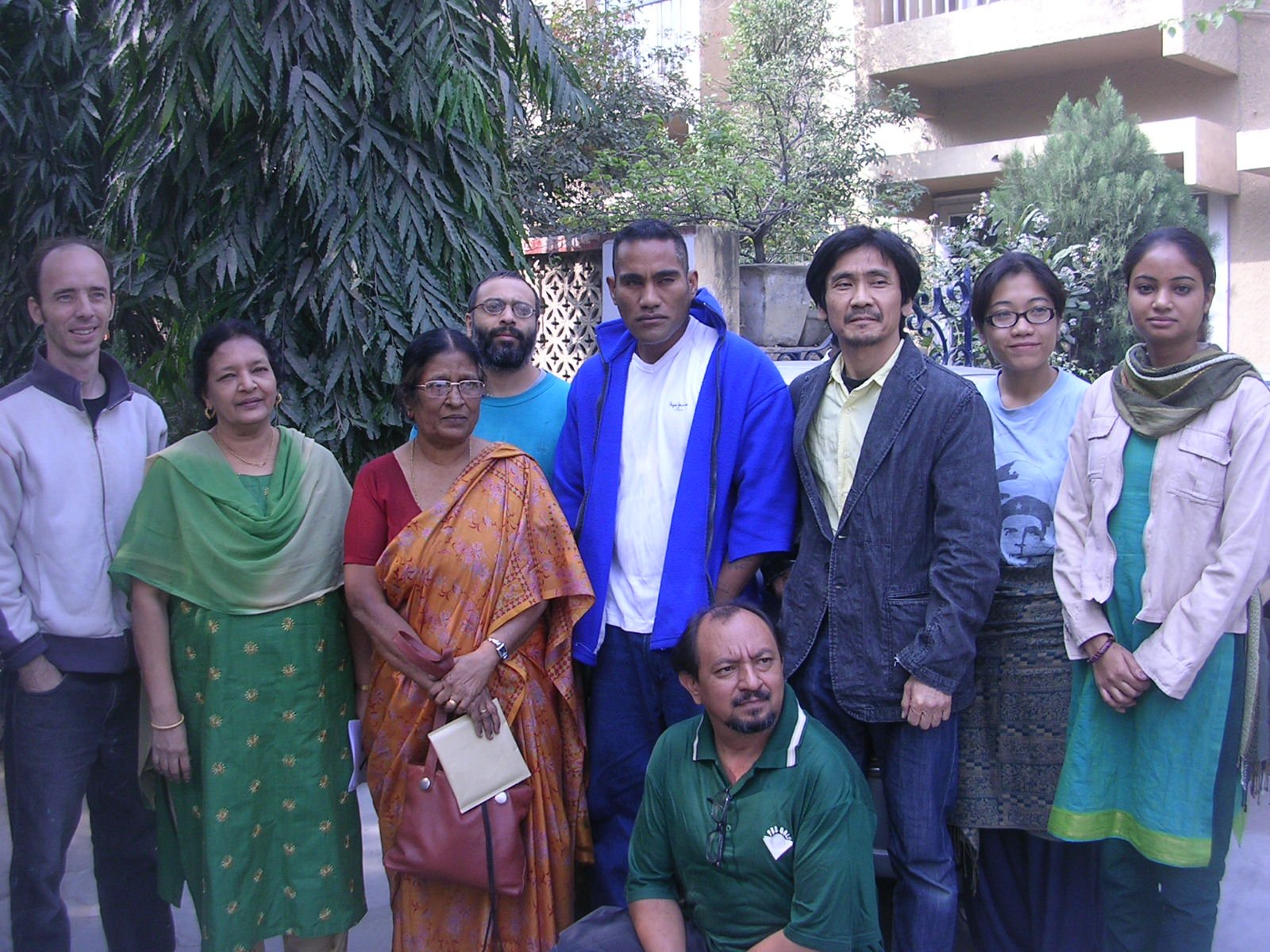
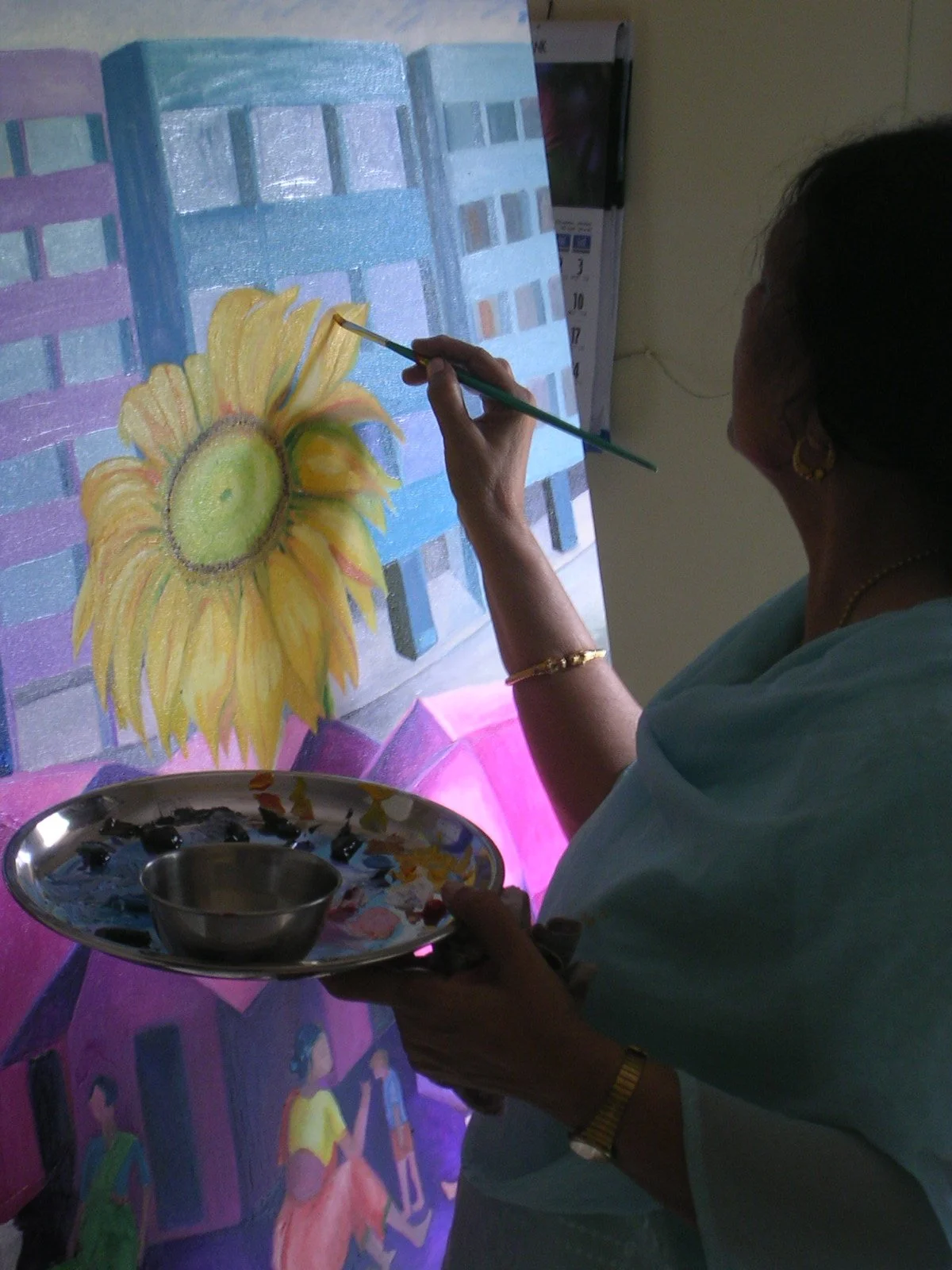
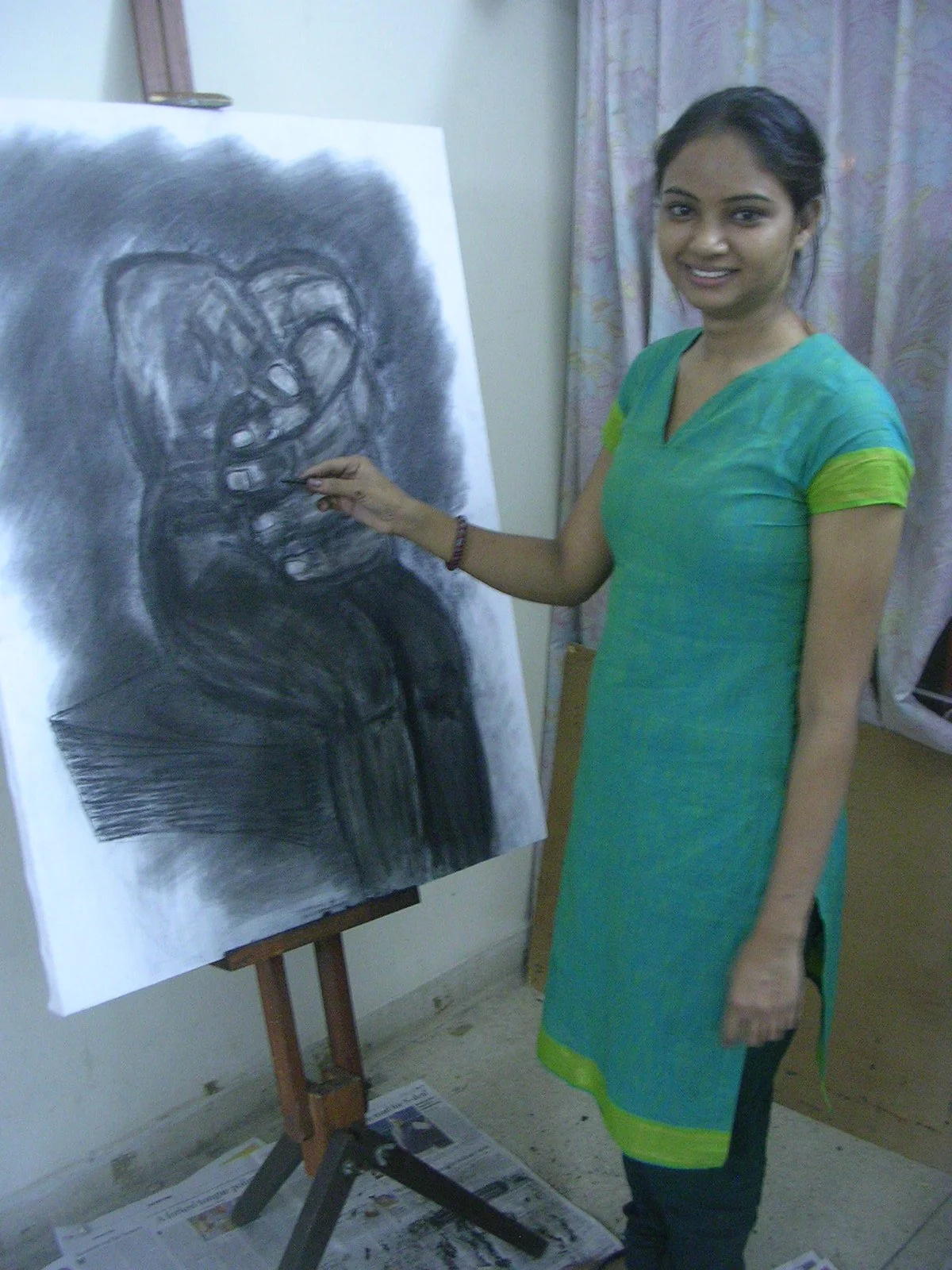























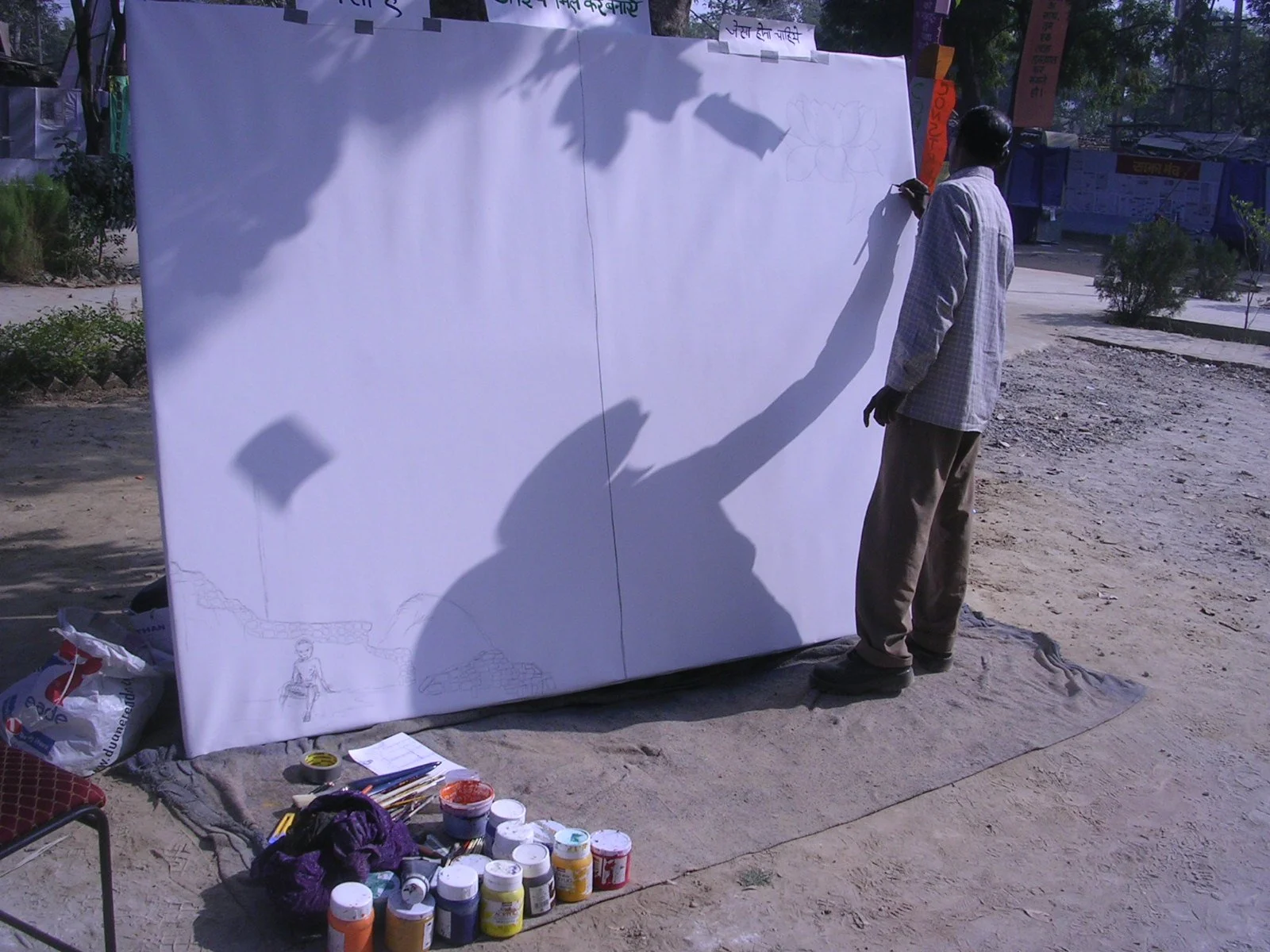

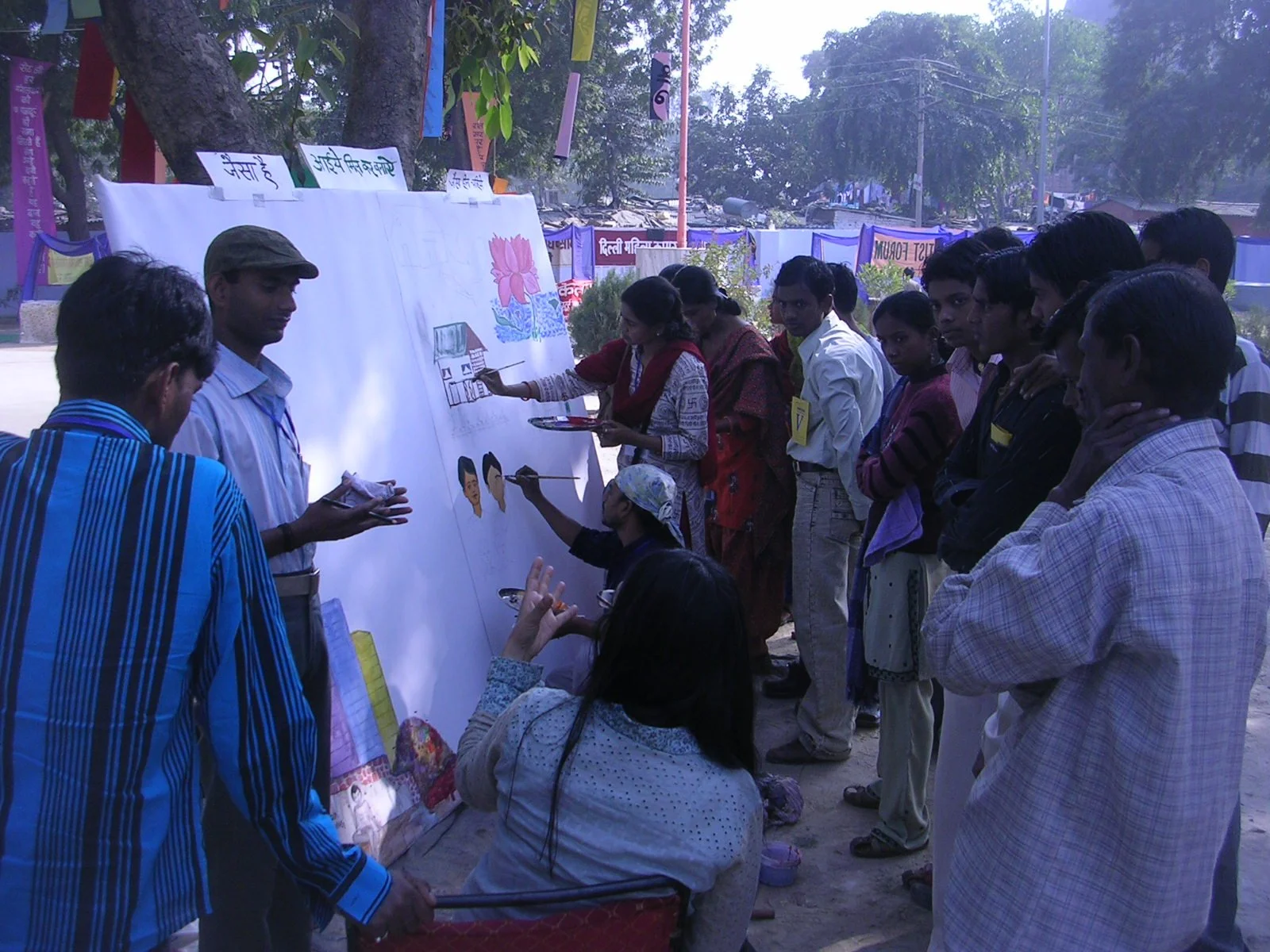
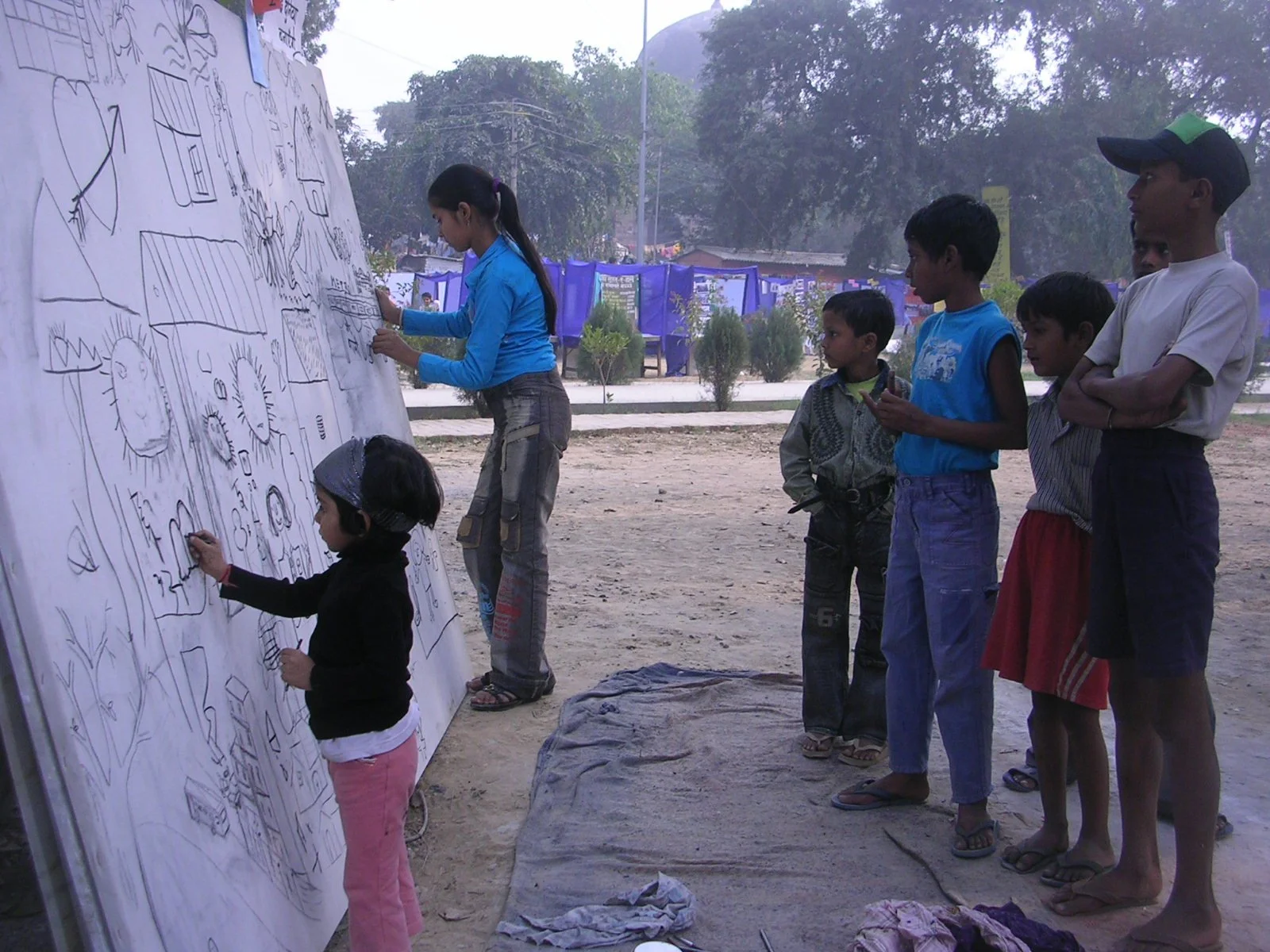
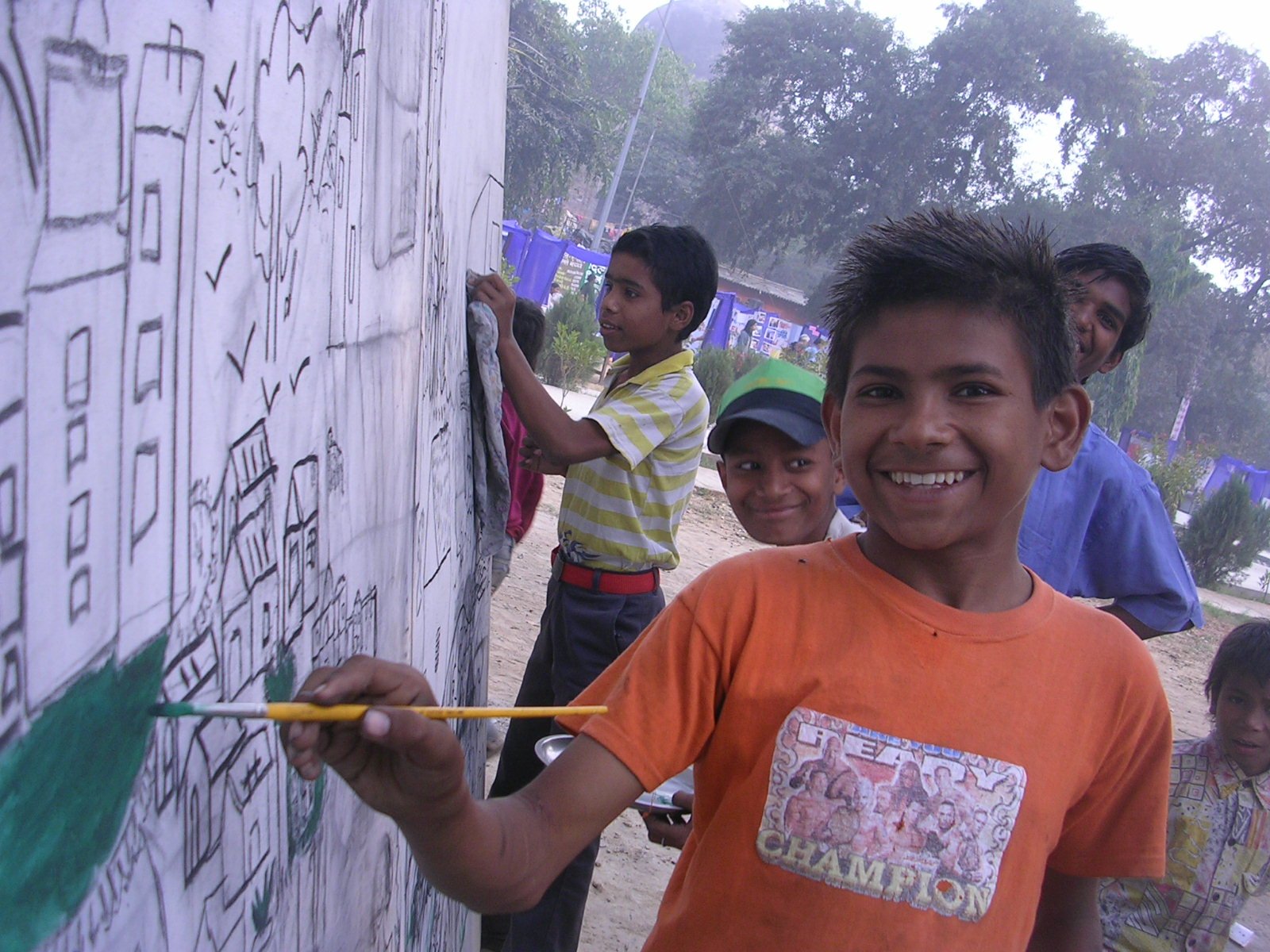
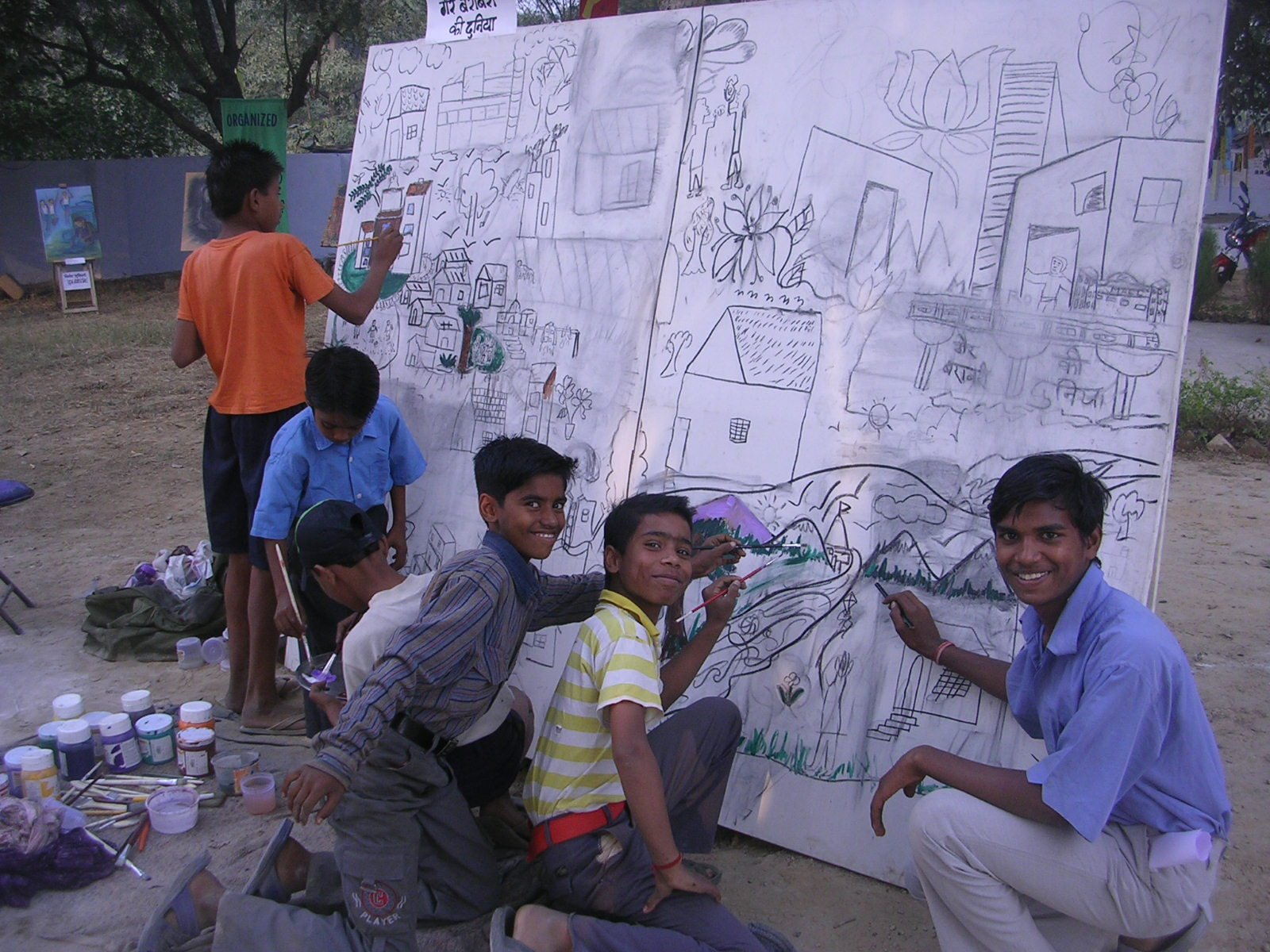
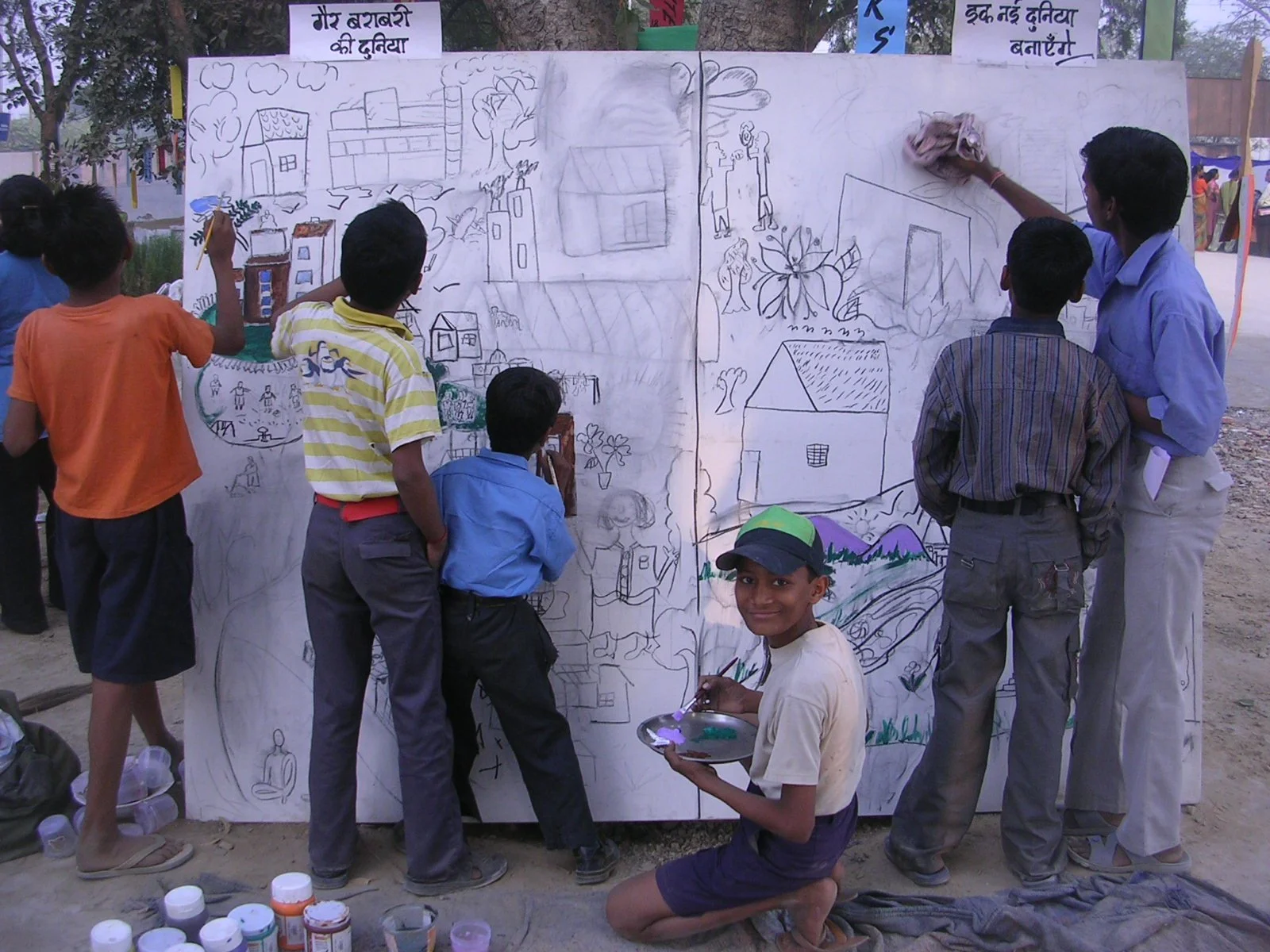
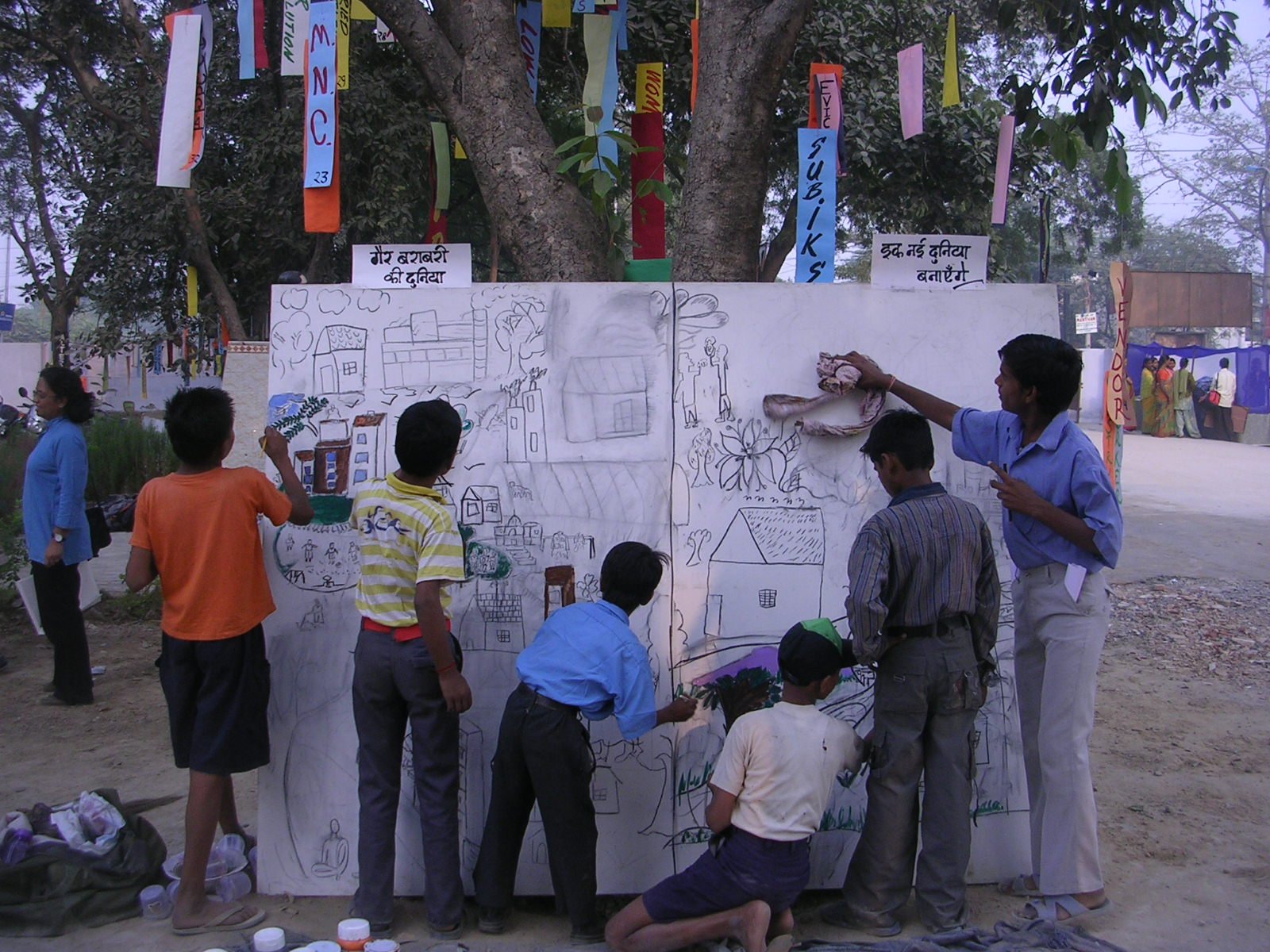
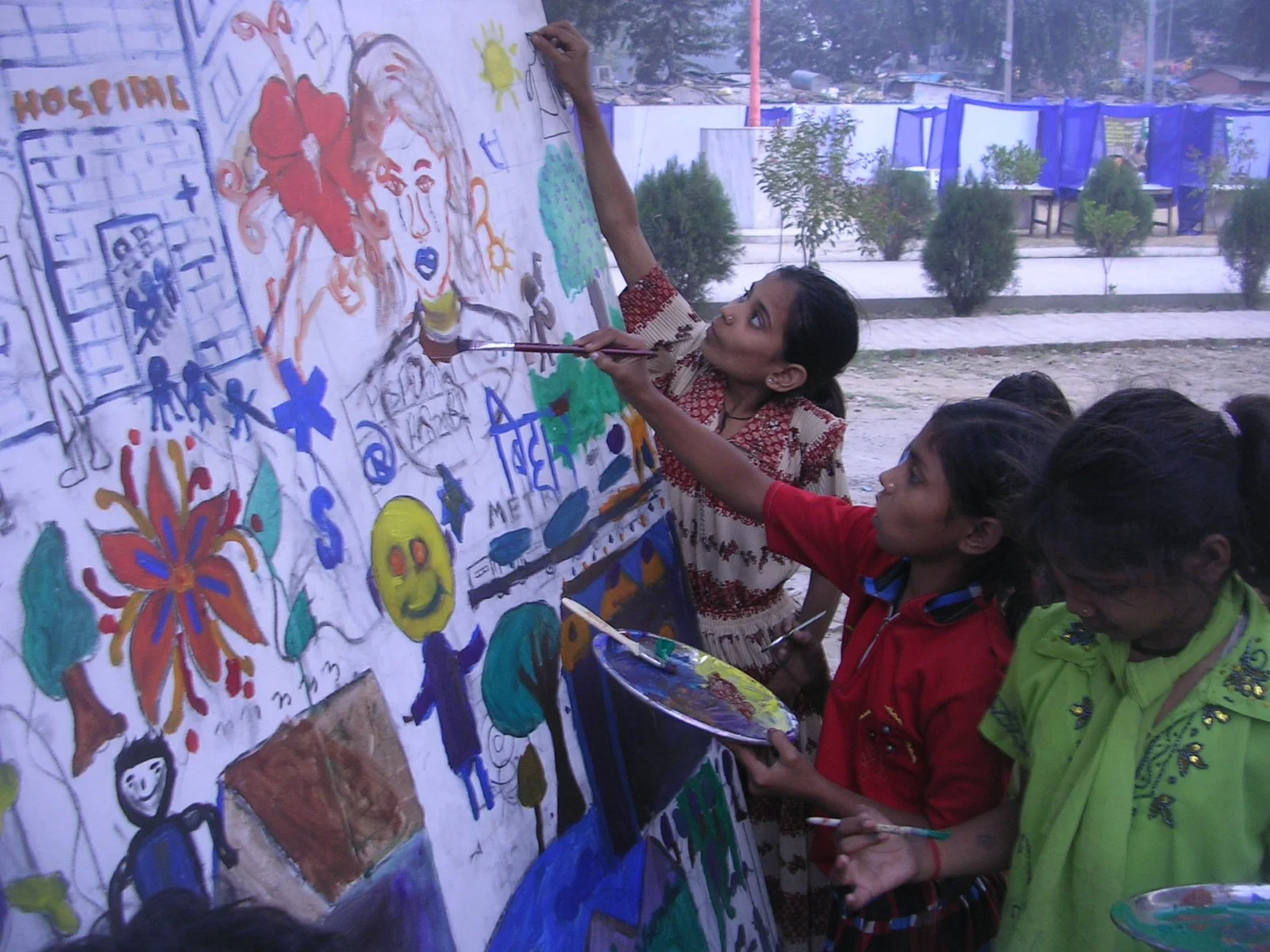
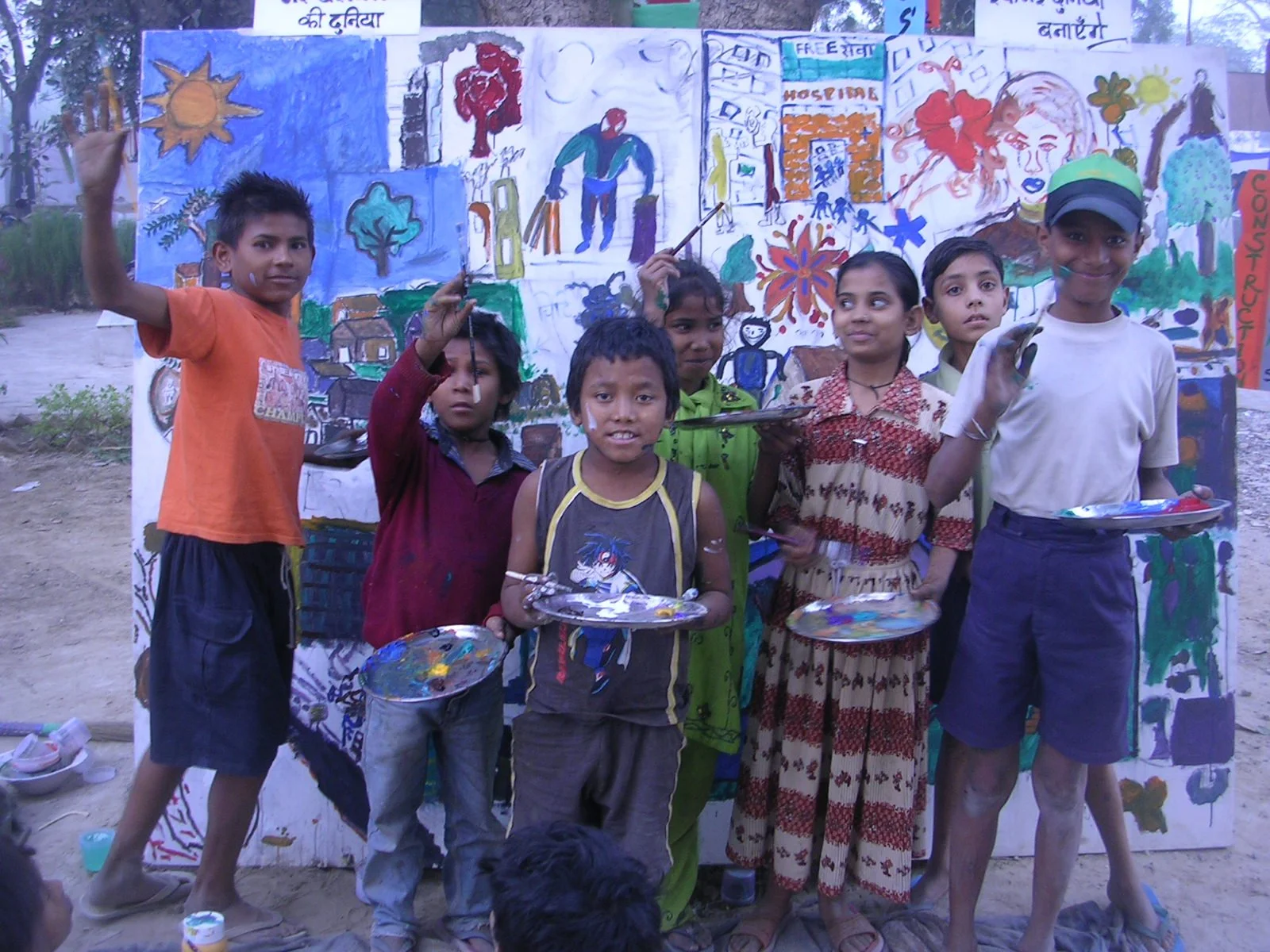











Your Custom Text Here
Art for Change is an organization run by artists for artists. It was started by an informal collective of friends who began meeting once a year to wrestle with an issue that affected both them and society. Our desire was to see our art have significance, and to understand the significance of issues around us through our art. Here is one of our early ‘Creative Conscience’ annual residencies.
The terms ‘growth’ and ‘development’ are measured by economic factors such as GDP and GNP that mask stark inequalities across the globe. The optimism nascent in those terms is often heard in the ambition that Delhi and Mumbai should become ‘world-class cities.’ By ‘world-class’ one conjures up images of Shanghai or Singapore: Asian cities with glittering malls, elaborate fly-overs, and sanitized streets. Yet on examining what is actually happening in pursuit of this goal, one thing becomes obvious: this process of ‘modernization’ often has little place for the poor, resulting both in ‘growth’ and growth of disparity.
What in some ways is more shocking than the disparity, however, is the callousness with which one turns a blind eye to it. In fact, our middle-class sensibilities can end up supporting and applauding efforts to disenfranchise the poor in pursuit of ‘modernization’ and ‘beautification.’ Street-hawkers are banned from streets. While the government gives land to build malls, slum colonies are cynically bulldozed, and efforts at urban development amount to what appears to be the attempt to physically remove the poor from our cities.
Underlying these actions are attitudes and beliefs about the poor that justify and give currency to injustices. Primary is the belief that the poor are to blame, resulting in what has been termed the ‘criminalization of poverty’—that state in which being poor equates to being illegal. Calling the slum dweller an ‘encroacher’ and ‘illegally occupying government land,’ the language used by policy makers and public alike, betrays this mindset. Senior law researcher Usha Ramanathan writes: “The perception of the slum dweller as wrongdoer—and demolition as punishment for such wrongdoing—has deflected attention from where the fault lies, even as it continues to destroy the lives of tens of thousands of people.” And where does the fault lie? It would seem with the government, which of the 8.89 million housing units it failed to build according to the 10th Plan document, 90% had been earmarked for housing slum dwellers .
Deeply ingrained in our perception of the poor is a certain ‘class-blindness’ birthed from middleclass lifestyles divorced from the experiences of the poor. Recent legislation has sought to make the streets of Delhi ‘hawker-free,’ i.e. banning the street vendors who make their livelihood by selling cheap food and wares displayed on handcarts and sidewalks. On May 11th, 2007 the Supreme Court passed an order banning hawkers from cooking food on roadsides. On the surface this would seem to be in the greatest of public interest, resulting in clear and clean sidewalks and the decongestion of traffic on roads. And yet not only is the devastation that such actions have on the economically vulnerable not appreciated, but also the profound benefit that road-side selling actually has to society. Street hawking not only provides poor and lower-class citizens cheap, affordable, and freshly cooked food, but also results in a great self-reliant and self-employed force which against all odds has found a way to make a living in a dignified way, rather than resorting to stealing or begging. Restaurants, with their high overheads on rented space are economically simply not an option to the majority of either consumer or seller among these classes.
What should be said about all this? What can be said? At the root is a simple question: Is the life of a poor person as intrinsically valuable as that of a rich person, and thus commensurate with all the rights and responsibilities that human dignity demands.
In fact, it can be asked: Do our cities only belong to the rich? Must development displace the poor? And, can we ‘modernize’ our cities while still respecting and including the aspirations of the poor?
These were some questions the Creative Conscience workshop 2007 wrestled with. ‘Creative Conscience’ is a community of friends, both amateur and professional artists, who wrestle with issues that affect both them and society at large. What brings us together is our friendship and a shared love of art and the dignity of human life. This year 16 artists met for 3 weeks to collectively reflect on these questions and produce art.
In partnership with the Hazards Center, one of Delhi’s leading organizations working with issues of shelter and livelihoods, an art workshop was run for adolescent boys from the informal settlements asking the same questions and the artwork presented at an interactive exhibition during Hazard Center’s annual ‘Manthan’ celebration. The collection of work was also presented in a public exhibition at the Reflection Art Gallery, Shahpur Jat, New Delhi from Oct 15-Nov 8, 2007.
Art for Change is an organization run by artists for artists. It was started by an informal collective of friends who began meeting once a year to wrestle with an issue that affected both them and society. Our desire was to see our art have significance, and to understand the significance of issues around us through our art. Here is one of our early ‘Creative Conscience’ annual residencies.
The terms ‘growth’ and ‘development’ are measured by economic factors such as GDP and GNP that mask stark inequalities across the globe. The optimism nascent in those terms is often heard in the ambition that Delhi and Mumbai should become ‘world-class cities.’ By ‘world-class’ one conjures up images of Shanghai or Singapore: Asian cities with glittering malls, elaborate fly-overs, and sanitized streets. Yet on examining what is actually happening in pursuit of this goal, one thing becomes obvious: this process of ‘modernization’ often has little place for the poor, resulting both in ‘growth’ and growth of disparity.
What in some ways is more shocking than the disparity, however, is the callousness with which one turns a blind eye to it. In fact, our middle-class sensibilities can end up supporting and applauding efforts to disenfranchise the poor in pursuit of ‘modernization’ and ‘beautification.’ Street-hawkers are banned from streets. While the government gives land to build malls, slum colonies are cynically bulldozed, and efforts at urban development amount to what appears to be the attempt to physically remove the poor from our cities.
Underlying these actions are attitudes and beliefs about the poor that justify and give currency to injustices. Primary is the belief that the poor are to blame, resulting in what has been termed the ‘criminalization of poverty’—that state in which being poor equates to being illegal. Calling the slum dweller an ‘encroacher’ and ‘illegally occupying government land,’ the language used by policy makers and public alike, betrays this mindset. Senior law researcher Usha Ramanathan writes: “The perception of the slum dweller as wrongdoer—and demolition as punishment for such wrongdoing—has deflected attention from where the fault lies, even as it continues to destroy the lives of tens of thousands of people.” And where does the fault lie? It would seem with the government, which of the 8.89 million housing units it failed to build according to the 10th Plan document, 90% had been earmarked for housing slum dwellers .
Deeply ingrained in our perception of the poor is a certain ‘class-blindness’ birthed from middleclass lifestyles divorced from the experiences of the poor. Recent legislation has sought to make the streets of Delhi ‘hawker-free,’ i.e. banning the street vendors who make their livelihood by selling cheap food and wares displayed on handcarts and sidewalks. On May 11th, 2007 the Supreme Court passed an order banning hawkers from cooking food on roadsides. On the surface this would seem to be in the greatest of public interest, resulting in clear and clean sidewalks and the decongestion of traffic on roads. And yet not only is the devastation that such actions have on the economically vulnerable not appreciated, but also the profound benefit that road-side selling actually has to society. Street hawking not only provides poor and lower-class citizens cheap, affordable, and freshly cooked food, but also results in a great self-reliant and self-employed force which against all odds has found a way to make a living in a dignified way, rather than resorting to stealing or begging. Restaurants, with their high overheads on rented space are economically simply not an option to the majority of either consumer or seller among these classes.
What should be said about all this? What can be said? At the root is a simple question: Is the life of a poor person as intrinsically valuable as that of a rich person, and thus commensurate with all the rights and responsibilities that human dignity demands.
In fact, it can be asked: Do our cities only belong to the rich? Must development displace the poor? And, can we ‘modernize’ our cities while still respecting and including the aspirations of the poor?
These were some questions the Creative Conscience workshop 2007 wrestled with. ‘Creative Conscience’ is a community of friends, both amateur and professional artists, who wrestle with issues that affect both them and society at large. What brings us together is our friendship and a shared love of art and the dignity of human life. This year 16 artists met for 3 weeks to collectively reflect on these questions and produce art.
In partnership with the Hazards Center, one of Delhi’s leading organizations working with issues of shelter and livelihoods, an art workshop was run for adolescent boys from the informal settlements asking the same questions and the artwork presented at an interactive exhibition during Hazard Center’s annual ‘Manthan’ celebration. The collection of work was also presented in a public exhibition at the Reflection Art Gallery, Shahpur Jat, New Delhi from Oct 15-Nov 8, 2007.